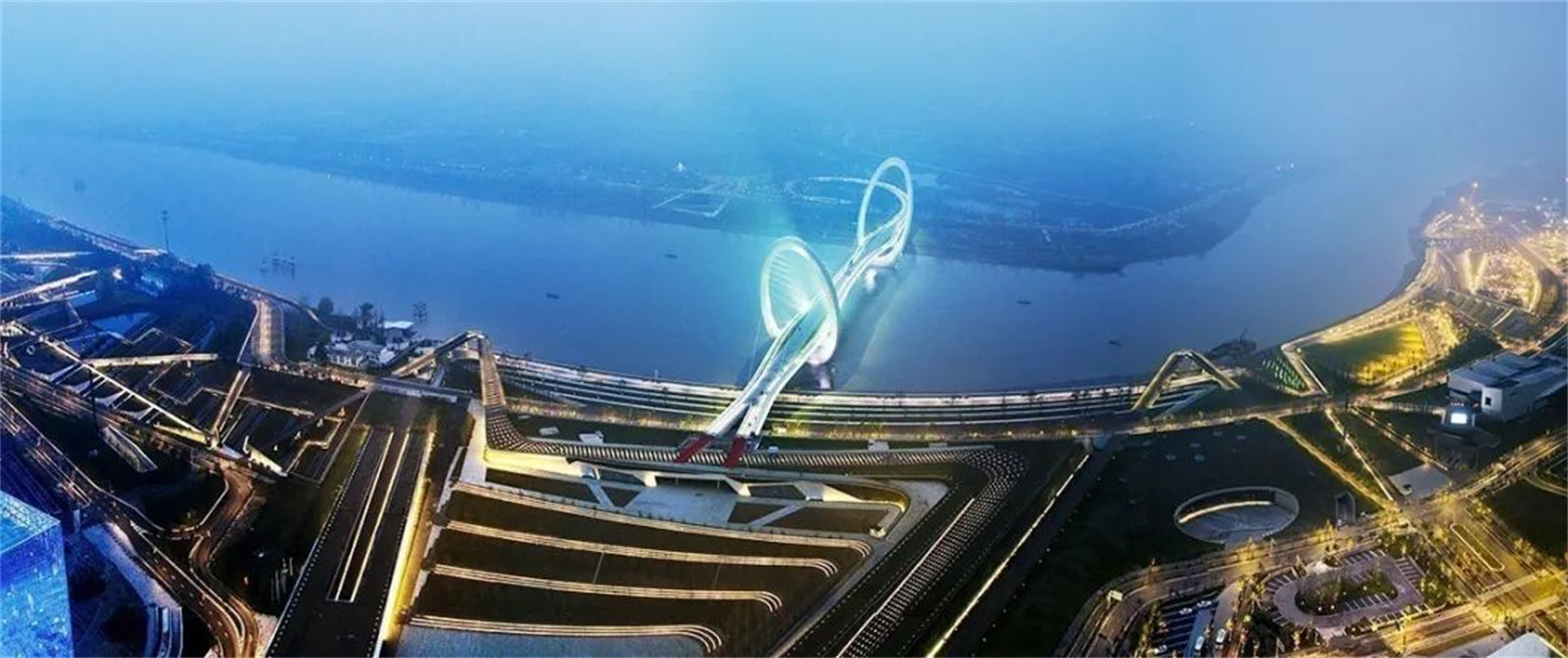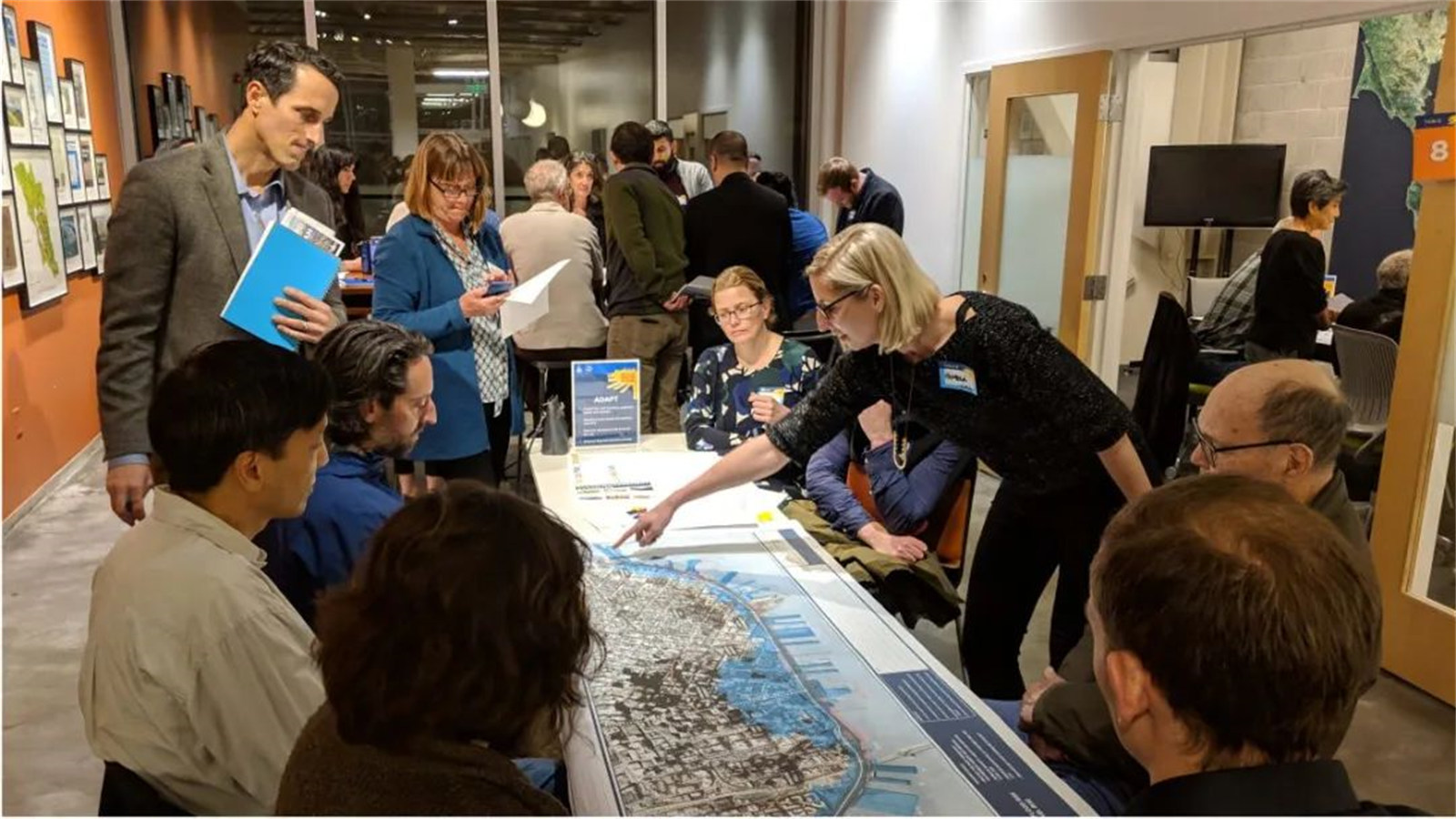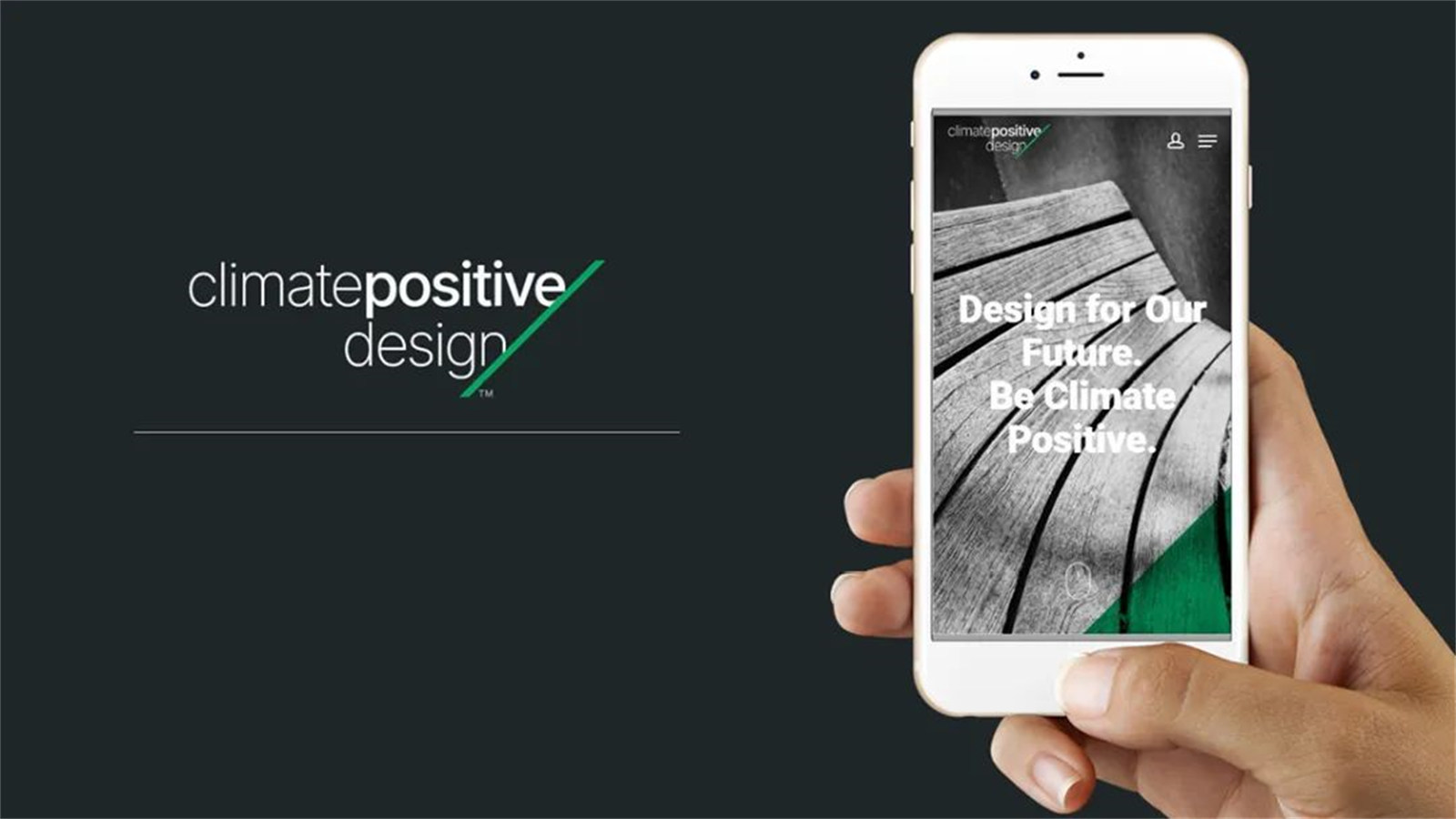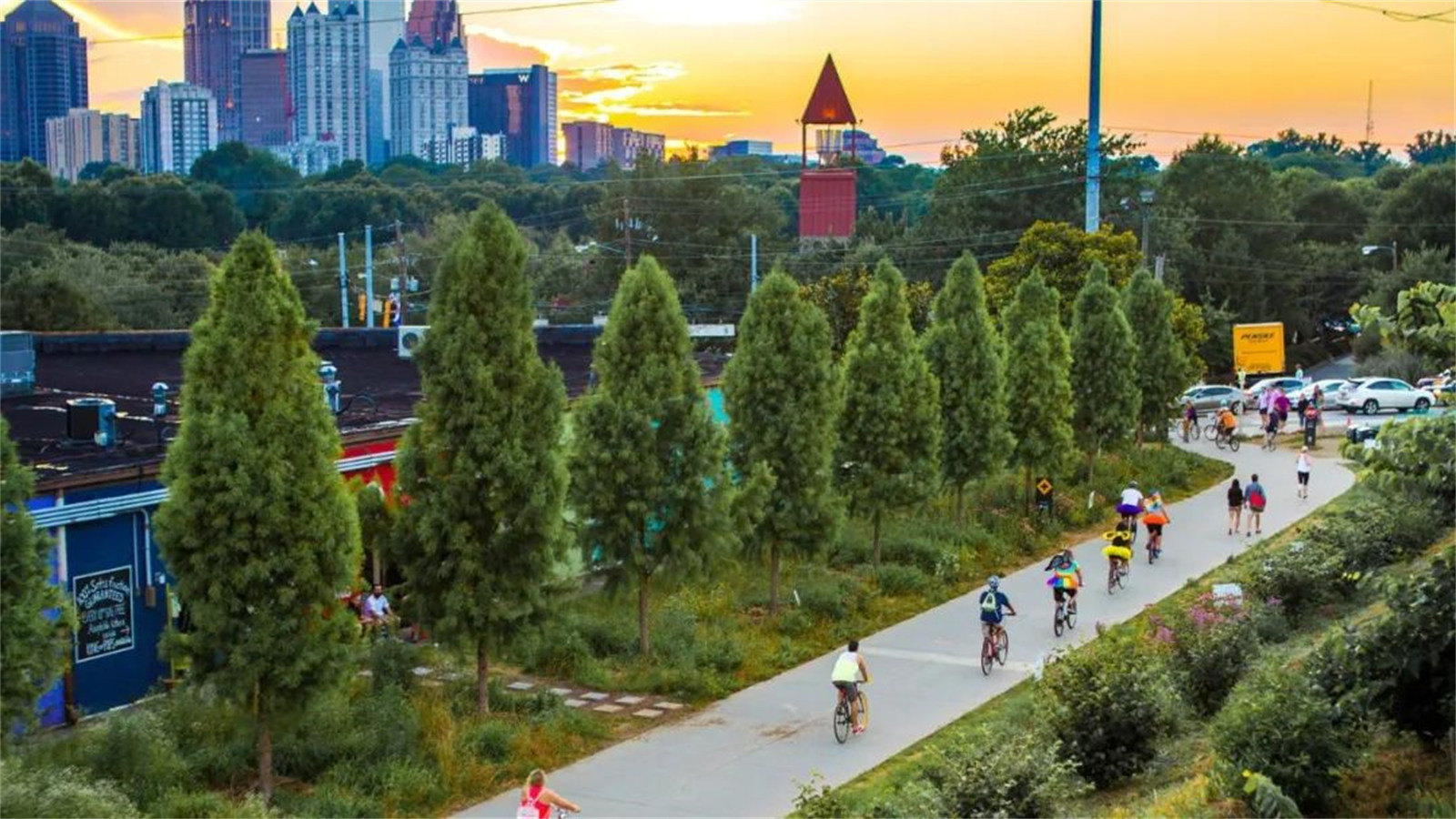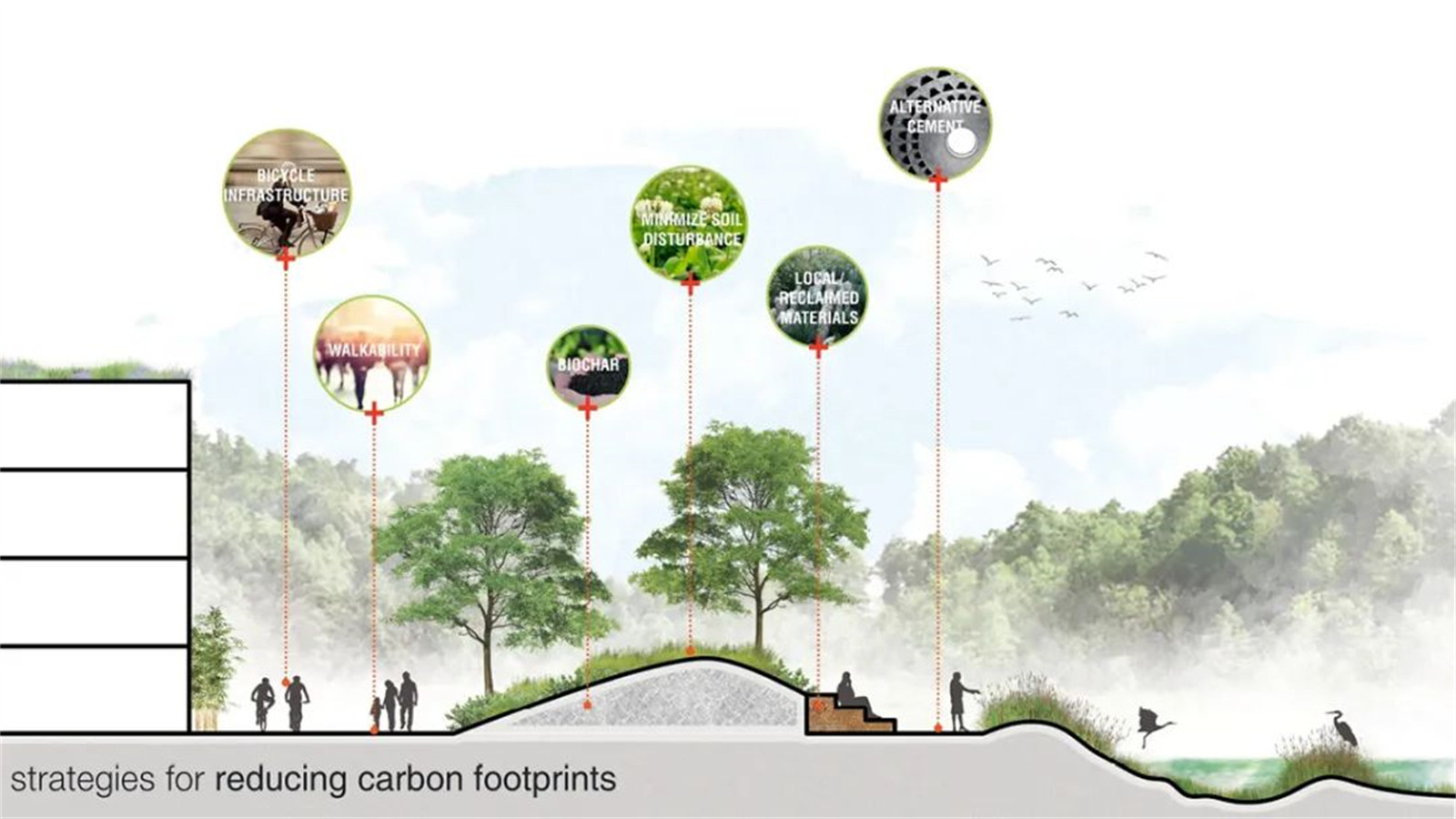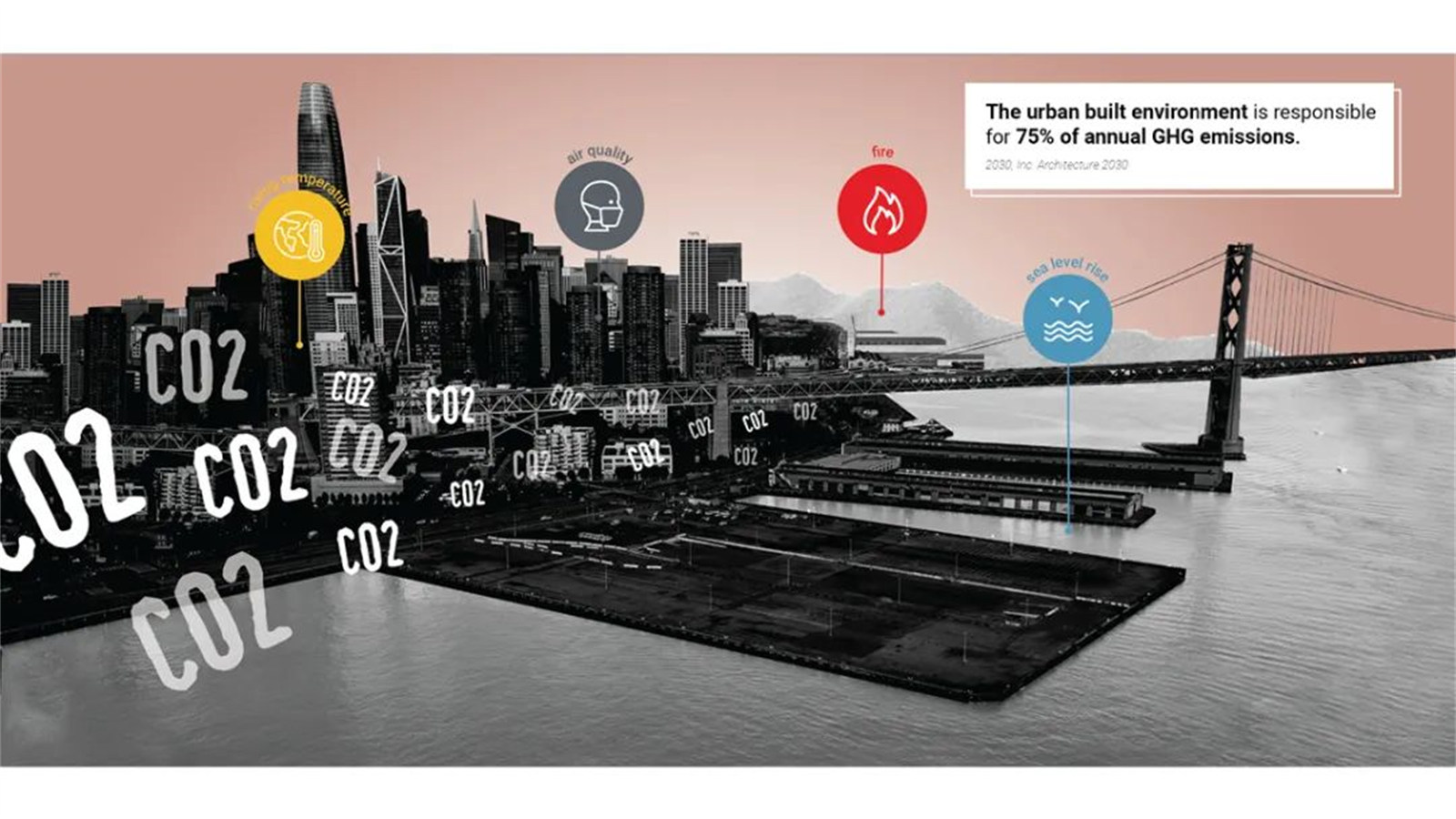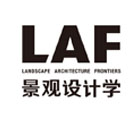帕梅拉·康拉德:气候变化背景下的景观设计师机遇
帕梅拉·康拉德:气候变化背景下的景观设计师机遇 | 前沿人物
Pamela Conrad: Opportunities for landscape architects in the context of climate change | Pioneer
▼帕梅拉·康拉德
Pamela Conrad
CMG景观事务所的首席设计师,气候积极设计(Climate Positive Design)计划发起人,致力于公共空间的韧性设计和气候变化解决方案。2018年景观基金学术奖(Landscape Architecture Foundation Fellowship)获得者,开发景观设计师版碳计算应用程序和气候积极设计计划—这是她在全球范围内分享的一项广泛推广的研究产物。美国景观设计师协会气候行动委员会的成员,于2019年被《旧金山商业时报》评为NCRE 有影响力的女性。
Pamela Conrad is a Principal at CMG Landscape Architecture and Founder of Climate Positive Design. Conrad focuses on climate mitigation and resilient design in the public realm. Her work is informed by a background in Plant Science and a passion for the environment rooted in growing up on a farm. She is an ASLA Climate Action Committee member, 2018-2019 LAF Fellow for Innovation and Leadership and recipient of the 2019 NCRE Women of Influence Award. She is a recipient of the 2018 Landscape Architecture Foundation Fellowship for the development of the award-winning Pathfinder landscape carbon calculator app and the Climate Positive Design Challenge.
受访人帕梅拉·康拉德目前最重要的研究成果之一是“气候积极设计”(Climate Positive Design)计划中的应用程序“探路者”(Pathfinder)。
这是一款用来计算景观碳足迹并鼓励固碳设计的免费应用程序,现已得到广泛应用,对于减少碳排放收效显著。她认为,景观设计师有着非常重要且专业的贡献,减少碳排放是一种责任,更是行业的机会。应对气候变化不仅仅是依靠计算碳数字和应用程序,更重要的是持续改变人们的想法,创造更多机会让全民参与。我们有幸听她讲述,她是如何从美国农场女孩,到中国做设计师,并成为影响世界的女性!
成长
Upbringing
《景观设计学》:您可以简单地跟中国读者分享下您的成长和设计经历吗?
帕梅拉:我1980年代出生于美国中部密苏里州,在一个偏远的农场里长大,很庆幸儿时的我能在那里肆意奔跑和玩耍。我们饲养了很多的牲畜,因此每天都非常忙碌。这些经历培养了我基本的职业素养,也让我从小就与自然产生了密不可分的联系。我想这也是为什么我成为了一名景观设计师——因为我热爱着这片土地,也深信我们有责任去关照这赖以生存的地球。
LA Frontiers: Could you briefly share your upbringing and design experience with Chinese readers?
Pamela: I was born and raised on a farm in the middle of rural United States, in Missouri. I was very lucky because I could run around and play and get dirty on the farm. We had lots of animals and also lots of work to do. That is where I learned a very strong work ethic, but also developed a deep connection to nature. Ultimately, it's why I became a landscape architect – because I fell in love with the earth and felt our responsibility to take care of it.
▼儿时在农场生活的帕梅拉
Young Pamela on a farm
我很早就开始工作了,由于我热爱园艺,人生的第一份工作就是帮助邻居们打理他们的花园。有一天,其中一个邻居向我介绍了景观设计师这门职业,她还给了我一本《景观设计杂志》(美国景观设计师协会1910年创办的杂志,译者注),并对我说:“你将来可以做这个职业,而且一定会很出色。”当时我们家还没有人上过大学,因此我可能会成为家里的第一位大学生。
在高中时,我开始在一个本地的景观设计团队里工作,并且是团队里唯一一位女性。我跟着男同事们一起做了很多繁重的体力活,大概十六七岁时,我已成为团队里最年轻的管理者。所以对我来说,很多时候我做着与同龄女孩不一样的事情,并且早已习惯了这种高强度的工作和各种挑战。
到大学时我继续朝着这个方向努力。我的第一个学位是“植物科学Plant Science”,因为我想了解植物和生态系统背后的奥秘。这算是我跨入职业大门的第一步。之后我意识到,要想有更大范围的影响力,我可能需要拓展在景观设计方面的知识,因此我到洛杉矶的加州州立理工大学波莫纳分校攻读了景观设计硕士。
我正式的职业起始点是在美国陆军工兵部队——一个美国联邦政府机构的实习,当时的工作与我研究生时期在生态修复设计和大尺度滨水景观设计的关注领域有关。为了学到更多的行业经验,我开始在SWA的工作,那是一段非常棒的经历,我参与了许多全球不同类型的项目。
7年之后,我移居到旧金山并开始在谢丽尔·巴顿事务所(Office of Cheryl Barton)工作。那是一个由女性主导、规模较小的精品事务所,即使在大萧条期间也做了很多优秀的公共项目。虽然我与他们的设计理念非常有共鸣,但当我得知有机会帮助SWA在上海创办分部时,我意识到去中国生活和工作并经历一种全新的文化将是一个多么难得的机会,它将是我人生的一个转折点。
我非常感激在中国工作的那段经历。我主要负责了“南京青奥会公园” (Nanjing Youth Olympic Park)项目。那是一个约40.5公顷的带状滨水公园。我花了非常多时间在水系统的设计上。虽然那只是项目中的一小部分,但举足轻重——水系统的设计是为了通过一系列的湿地来净化受污染的水质。对我来说,那是最有成就感的成果之一,即为生态系统和人们的健康提供生态效益,我觉得那是我回馈自然的方式。
I started working at a very young age. It began in my neighbors’ yards because I loved gardening. I would help them with landscape projects at their houses. At some point in time, one of those neighbors told me that landscape architecture was a profession, and she put a Landscape Architecture Magazine in front of me and said, “You can do this someday. You’d be great at it.” No one in my family had gone to college before, so I was a potential first-generation college graduate.
In high school, I started working for a local landscape architect. At first, I worked in the nursery, but I realized I actually wanted to be outside and build landscapes. So I joined the crew. I was the only female. I did a lot of physical, hard labor, right alongside the men, and eventually was in charge of them at a very young age, maybe 16 or 17 years old. For me, I am used to hard work and overcoming challenges. Often times not involved in things that other girls in my age were doing.
I continued working through college. My first degree was Plant Science. I wanted to appreciate the mystery behind plants and ecosystems. So that was my first step into the profession. Then I realized to make larger scale impacts I would need to expand my education with a Master of Landscape Architecture degree, which I received from California State Polytechnic University at Pomona, outside of Los Angeles.
My connection to LA was because I interned at the Army Corps of Engineers, a federal agency in the United States. So that's where I started my career and found the work very complementary to my grad school degree, which focused on regenerative design and large-scale watershed management. Wanting to learn more, I started working at the SWA group. It was a really great place to get a lot of experience on different types of projects worldwide.
Several years later, I moved to San Francisco and worked at the Office of Cheryl Barton, a smaller-scale women-owned office doing great public work, even through the Great Recession. While I deeply connected with the design ethos, when I learned of the chance to help SWA open a Shanghai office, I realized what a great opportunity it would be to live and work on projects in China and get to know an entirely new culture. It was one of those life-changing moments.
I was grateful when I worked there to spend most of my time working on the Nanjing Youth Olympic Park project, which is a 100-acre waterfront project for the Youth Olympic games. It was a long riverfront, and I spent most of my time focusing on the design of the water systems. That was one small but important aspect of the park creation – designing it to treat the contaminated river water through a series of polishing wetlands. For me, that was one of the most fulfilling contributions – to provide ecological benefits to ecosystems and health benefits to people. I feel it is my way of giving back.
▼南京青奥会公园
Nanjing Youth Olympic Park



8年前我加入了旧金山的CMG景观设计事务所。我在这里的大部分时间都关注大尺度的再开发或有关气候变化的适应性设计上。我经历了各种各样类型和尺度的项目,发挥了我所有的经验,但帮助最大的还是我的生态知识背景。其中金银岛Treasure Island项目很有代表性,那是在美国旧金山湾一个人工岛屿的200多公顷规模的再开发项目。为应对海湾海平面上升,我们史无前例地提出了适应性的混合功能开发策略。金银岛四面环海,面临着海平面上升的风险,这个项目提供了一个很好的机会去探索合适的开发规范,以及如何规划该地区其他所有项目以适应未来的海平面上升。
I joined CMG Landscape Architecture here in San Francisco, California about eight years ago. Most of my time at CMG has been focused on large-scale redevelopment or adaptation projects that respond to climate change impacts. I have worked on all kinds and scales of projects and carry forward all of my learned experiences, but what helps me to focus is my ecological background. The Treasure Island redevelopment project was a representative one. That's an over 500-acre redevelopment project on an artificial island in the middle of San Francisco Bay. The mixed-use project was the catalyst for new sea-level rise adaptation policies in the entire bay area, which didn't exist before. Because this large project is surrounded by water, knowing that sea-level rise is coming, it was an opportunity to learn about what regulation should be guiding developments and how to plan for all other projects in the region to adapt to future sea-level rise.
▼金银岛项目鸟瞰
Bird’s eye view of Treasure Island
该项目包含了约120公顷以生态系统修复为核心的多种类型公园、公共空间以及步道。我们与金银岛发展集团(TIDG, Treasure Island Development Group)、金银岛开发管理局(TIDA, Treasure Island Development Authority)以及当地非营利机构环境正义扫盲机构(LEJ, Literacy for Environmental Justice)和旧金山环境部(SFE, SF Department of the Environment)共同协作,在岛上播种和栽植本地回收的植物和种子。最值得关注的是岛上的苗圃,它通过适应当地微气候的精确种植试验来确保岛上植物能成功存活。
我们团队还经常进行木材的再利用和回收,以最小化我们的碳足迹。许多为了恢复栖息地而被移除的入侵树种被制成项目场地的景观小品,以保持质朴的特色,这种做法充分利用了岛上的资源,并保留了储存在树木中的碳。这是我加入CMG以来一直在从事的一项大型项目。
过去四年,我负责了旧金山港口滨水空间的韧性规划和城市设计(Port of San Francisco Waterfront Resilience Program)项目。我们与旧金山港口管理局(Port of San Francisco)、嘉科工程(Jacobs Engineering)和SITELAB城市设计事务所(SITELAB Urban Design Studio)合作,共同探讨如何以适应性设计去减小海平面上升和地震这两种风险对12公里旧金山海岸线带来的威胁。这样的挑战让我们有机会去重新构想更安全且对人类友好的滨水区——改善滨水区的可达性、娱乐性,提供干净的空气、舒适的环境,以及支持生物多样性并实现固碳的动植物栖息地。所有这些好的事物都是来自于改变的需要,也更是机遇。
It includes 300 acres of all different types of parks and open spaces to trails that are more ecosystem restoration focused. We're collaborating with our client Treasure Island Development Group (TIDG) and the Treasure Island Development Authority (TIDA) along with a local grower Literacy for Environmental Justice (LEJ) and SF Department of the Environment (SFE) to grow and replant indigenous salvaged plants and seed on the island. One of the really interesting things to see is the on-site nursery. It helps to ensure the success of the plants by growing them in the exact micro-climate.
At CMG we've also done a lot of wood reuse and salvage to minimize our carbon footprint. Many of the invasive trees that were removed for habitat restoration purposes are being milled into site furnishings to maintain the rustic character, utilize the resources on the island, and retain the carbon stored in the wood. So that's one of the other big projects that I've been working on since joining CMG.
Over the last four years, I've also been helping lead the planning and urban design for the Port of San Francisco Waterfront Resilience Program. The scope includes working with the Port of San Francisco, Jacobs Engineering and SITELAB Urban Design Studio to understand how we can adapt to reduce the risk of sea level rise and earthquakes along 7.5 miles of San Francisco shoreline. The waterfront is at risk from both of those threats today. With this challenge exists the opportunity to reimagine the waterfront not only to be safer but to be better for people – to improve opportunities for all to have access and recreation, healthy air, comfort, and provide habitat that sequesters carbon and supports biodiversity. All these good things are coming out of the need for change, but we see it as the chance to make a better future for the San Francisco waterfront.
▼旧金山港口滨水空间的韧性规划和城市设计项目
Port of San Francisco Waterfront Resilience Program

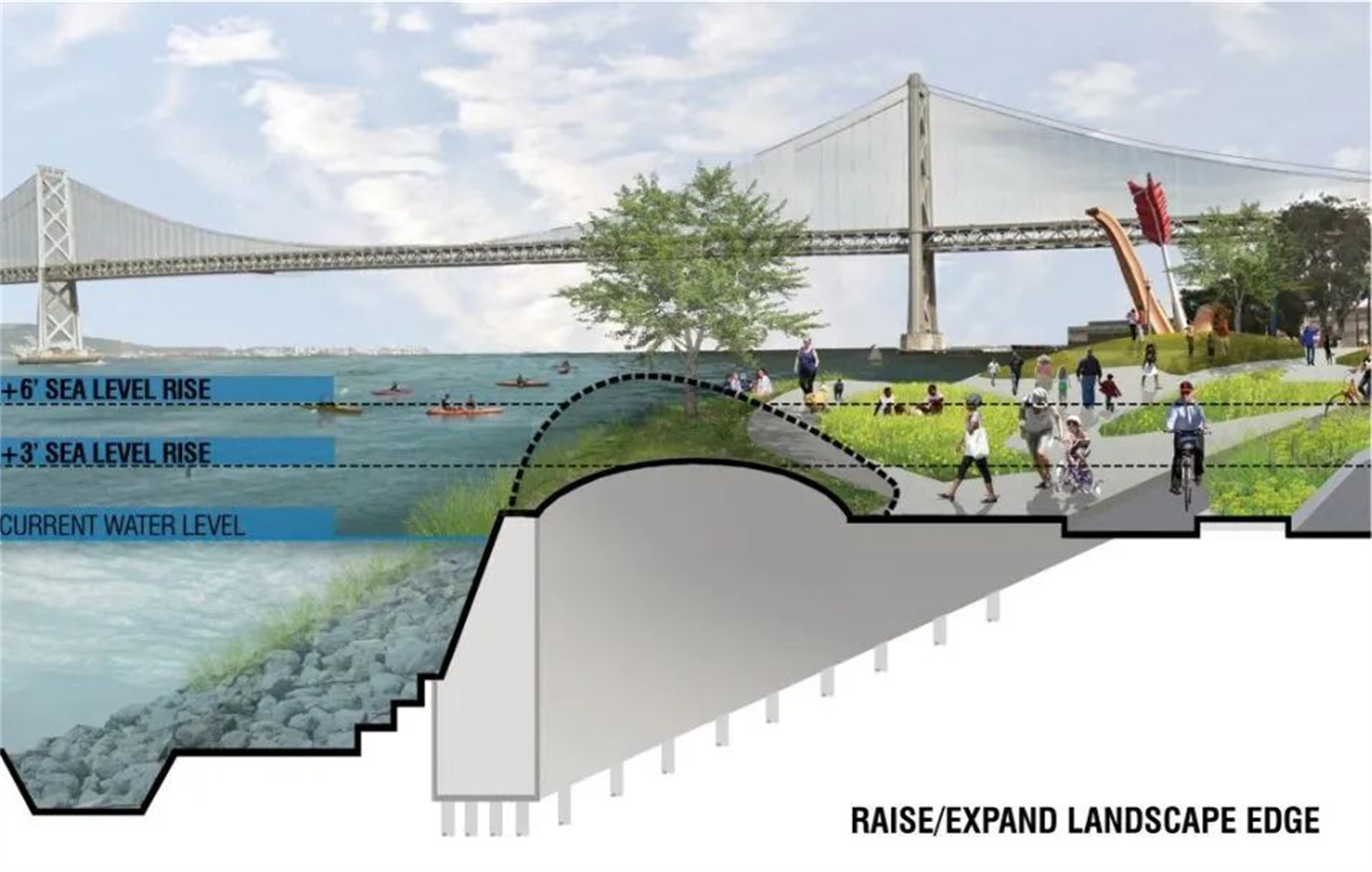
▼旧金山港口滨水空间项目讨论中的情景
Discussion of Port of San Francisco Waterfront Resilience Program
最近,我创立并领导了“气候积极设计”(Climate Positive Design)计划,该计划正在我们的许多项目中得以实现,比如佐治亚州亚特兰大周围的城市步道系统——亚特兰大环线项目。这是一个很好的机会能与亚特兰大环线公司(Atlanta BeltLine Inc.)和阿尔塔规划设计公司(Alta Planning and Design)合作,对现阶段的设计进行评估以减少碳足迹。
And most recently, I founded and lead the Climate Positive Design initiative, which is being implemented in many of our projects, including the Atlanta BeltLine, an urban trail system around Atlanta, Georgia. That has been an opportunity to work with a broad design team, including Atlanta BeltLine Inc. and Alta Planning and Design, on evaluating the current phase of design to improve its carbon footprint.
▼“气候积极设计”计划
Climate Positive Design program
▼亚特兰大环线部分鸟瞰 ©️亚特兰大会议与旅游局
Partial bird’s eye view of Atlanta BeltLine ©️ Atlanta Convention & Visitors Bureau
探路者
Pathfinder
LAF:您目前最重要的研究成果之一是“气候积极设计”计划中的应用程序“探路者”(Pathfinder),这是一款用来计算景观碳足迹并鼓励固碳设计的免费应用程序。自从投入使用以来,这款应用程序和涉及的研究在世界范围内产生了什么影响呢?
帕梅拉:过去两年里,已经有500多个项目使用了“探路者”应用程序并种植了大约160万棵树。到2040年,那些项目将会封存更多的碳以减少碳排放。这意味着到2024年它们将封存约180万吨的碳,相当于减少了40万辆汽车的排放量,这都是积少成多的。但我们明白,在气候变化到最极端的状态之前,这种影响与全球整体的碳预算息息相关。
LA Frontiers: One of the most important research outcomes of the Climate Positive Design is Pathfinder, a free application to calculate the landscape carbon footprint and encourage carbon sequestration design. So since the launch of this application, what is the influence of this tool and research around the world?
Pamela: Over 500 projects that have been logged in the Pathfinder for the last two years are planting around 1.6 million trees. Those projects show that they're sequestering more carbon than they emit by the year 2040. That amount of sequestration beyond their project emissions by the year 2040 is about 1.8 million metric tons, equivalent to taking nearly 400,000 cars off the road. It's starting to tell us that when we incorporate these changes together around the world, they can really add up to make a difference. We can understand that impact in relation to the overall carbon budget left in the world before we surpass dangerous temperature tipping points.
▼“气候积极设计”计划的部分研究成果:(从左至右)“探路者”应用程序、网络资源库、“气候积极设计”挑战倡议
Part of research outcome of Climate Positive Design: (from left to right) Pathfinder app, Website resources, The Challenge
▼减少碳足迹的景观设计策略:(从左至右)自行车道系统(bicycle infrastructure)、步行系统(walkability)、生物碳(biochar)、最大限度地减少土壤干扰(minimize soil disturbance)、当地/回收的材料(local/reclaimed materials)、水泥替代物(alternative cement)
Strategies for reducing carbon footprints: (from left to right) bicycle infrastructure, walkability, biochar, minimize soil disturbance, local/reclaimed materials, alternative cement
▼增加固碳的景观设计策略:(从左至右)绿色屋顶/冷屋顶(green roofs/cool roofs)、竹子(bamboo)、草坪灌木(shrubs for lawn)、林地(forests)、水滨湿地(coastal wetlands)、海草(seagrasses)、红树林(mangroves)
Strategies for increasing sequestration: (from left to right) green roofs/cool roofs, bamboo, shrubs for lawn, forests, coastal wetlands, seagrasses, mangroves
我们的目标是努力减缓地球逼近气候变化拐点的速度,因为这是我们目前面临的最大挑战。由此,我们可以防止数十亿人遭受严重的高温、洪水、干旱和火灾等气候灾害。作为景观设计师,我们可以有非常重要且专业的贡献,因为我们工作中使用的树木、植被和设计,都涉及碳排放。这像是一种责任,也是我们行业的机会。
“气候积极设计”计划带给我们的另一个启发是更好地去理解我们现在的行为所产生的影响。目前,景观设计中有约75%的碳排放来自我们使用的材料。这项研究让我们看到了问题,并去关注这些材料和产品。
有很多方法可以减少项目中的碳排放,比如利用水泥的替代品、使用本土材料以及在提取、制造和运输过程中都用含碳较少的材料,如使用木材或风化的花岗岩而不是混凝土。这有助于我们了解当前“习以为常”的行为所产生的影响,改变观念,并充分发挥我们的职业特长来探索机遇。
Our goal is to make a greater contribution in preventing those thresholds because that's the main challenge we're up against right now. By doing that, we can prevent billions of people from being exposed to severe heat, floods, drought, and fire. We can make significant professional contributions and are lucky that within our everyday design toolkit we have trees, plants, and landscapes that take carbon dioxide into the atmosphere. It partially feels like a responsibility, but it's also an opportunity for our profession.
Another aspect that we are learning from Climate Positive Design is better understanding our existing impacts. Right now, about 75 % of all of our emissions in landscape architecture come from the materials that we use. It is very helpful to better understand this so we can target those items and products.
There are many strategies to reducing our project carbon emissions, including using cement substitutions in concrete, using local materials, and materials that have lower embodied carbon in the extraction, manufacturing and transport like using wood or decomposed granite instead or concrete. It helps us to understand our current “business-as-usual” impacts, focus on what we can do, and get the most out of the changes that we're going to make as a profession.
▼利用耗碳较少的材料、减少景观设计项目中的碳排放可以产生重要的影响
Using less carbon-intensive materials and reducing carbon emissions in landscape design projects can have an important impact
LAF:在这项研究中,您是否获得了有关中国的使用者和成果的反馈?什么样的人会使用这个“探路者”应用程序,是设计师还是学者?什么样的中国项目在使用它呢?
帕梅拉:自应用程序投入使用以来,中国的使用量一直排在前10位。如今,中国已成为响应“气候积极设计”挑战倡议项目最多的国家之一,跃居全球前5,可喜可贺!中国项目中包含学生作品、研究课题,以及设计成果。我们的确发现,随着时间的推移,应用程序的使用量越来越高。由此看来,我们就越能理解每个国家在气候变化中的贡献如何。我非常期待你们的支持和宣传,以便有更多的中国景观设计师能了解项目场地能利用的资源情况。
LA Frontiers: Do you have some research feedback about the users and outcomes from China? What kind of people use Pathfinder, designers or scholars, or any projects have been tried from China?
Pamela: China has been within the top ten of website users since the beginning. Today, China is in the top five countries globally that have submitted the most projects in the Climate Positive Design Challenge. That's really great to see. There is a mix of students and academic projects, also professional projects. We do find that the usage has increased over time. The more projects that are logged, the better we can understand each country’s contributions.I'm looking forward to your support in helping get the word out, so more landscape architects in China will know about the resources available to them and their projects.
我看中国
The View of China
LAF:10年前,您在上海生活工作了2年半,这段经历我们想了解的更多一些,可以分享一些您对中国景观设计行业的看法吗?
帕梅拉:十年前我在中国时,景观设计行业正在蓬勃发展。高校里有很多经历了专业培养的学生,但市场上的公司还没有美国那么多。那时候是国际公司到中国开拓市场并与本地设计机构合作、分享经验的窗口期。我们经常一起合作,最后得到非常高质量的设计成果。我认为现在越来越多的中国和其他发展中国家的景观设计师正在行业内异军突起。
LA Frontiers: 10 years ago, you lived and worked in Shanghai for 2.5 years. Could you share some deep thinking about the Chinese landscape architecture industry?
Pamela: When I was there 10 years ago, landscape architecture seemed to be a growing profession in China. There were many students in school, but not as many firms as compared to the United States. It was an opportunity for international firms to work in China and collaborate with the local design institutes to share our lessons and experience. We always teamed up, then ultimately ensured that the projects were implemented with a high quality. I definitely see the increased presence of landscape architects from China and other developing countries around the world moving up into a higher level of design in the field.
▼帕梅拉与SWA中国上海分部的同事们
Pamela and her colleagues of SWA’s Shanghai studio
▼帕梅拉在上海工作的情景
Pamela working in Shanghai


LAF:基于您的研究和工作经历,相比于美国的生态设计项目,您如何看待中国的项目?
帕梅拉:我看到中国已经非常快地成功实施了很多优秀项目,也非常高兴能看到“海绵城市”这样的理念能被落实。我所走访的,尤其是上海的项目中,设计师的成果都非常出色。令人钦佩的是,中国的景观设计师正在致力于修复河道,以确保人们可以喝到干净的水,吃到安全健康的食物。我认为这是在中国建立健康社区的一种趋势或首要任务,这对于人口快速增长的国家来说非常重要。
但同时我认为实现碳减排的目标仍然充满挑战性,尤其对于发展中国家而言。许多项目都会大量种植植物并支持生态系统服务,这些行为都会产生碳排放,提高人们对这点的认识非常有意义。我们需要改变以往的习惯认知,首先要认识到项目中使用的每一种材料都一定的温室气体排放量,这是事实,也是问题,也是我们去测量碳排放的原因。
LA Frontiers: Based on your research and work experience, what do you think about Chinese ecological projects compared with the design practices in the US?
Pamela: I've seen many wonderful projects installed in China, and very quickly too. It is great to see the concept of “Sponge Cities” being implemented. Designers have done a lot of impressive work around projects that I visited, especially in Shanghai. It is admirable seeing landscape architects in China restoring waterways to help make sure that people have clean water to drink, clean food to eat, and are safe and healthy. I see that as a trend or priority of making healthy communities in China, which is important to support while countries and populations grow quickly. As far as I can tell, China seems to be heading in the right direction.
But I think it is still challenging, especially for developing countries, to meet our emissions reduction goals. While it seems that many projects are heavily planted and support ecosystem services, it is helpful to raise awareness about the emissions that come from our work so we can improve that aspect. It starts with recognizing every material installed has associated greenhouse gas emissions. That's something that we all need to tackle really understand. And that's why we're measuring it.
未来的美国
The Future of U.S.
LAF:您参加了2021年美国景观设计师(ASLA)年度大会,请评价一下?这届大会相比前一年有何不同?
帕梅拉:2021年的ASLA大会上,我与来自Sasaki的克里斯托弗·哈迪·吴(Christopher Hardy-Ng)和来自荒野景观设计事务所(Wildland Workshop)的狄安娜·林恩(Deanna Lynn)一起参加了一个小组讨论。我汇报的重点是我们作为一个集体性的职业可以产生的全球影响力。“IFLA气候行动工作小组”(IFLA Climate Action Working Group)的主席柯恰空沃·拉克姆(Kotchakorn Voraakhom)作为代表参加了2021年联合国气候变化大会(COP26)。我在小组讨论中分享了大会的成果,即由来自全球77个国家的7万多名景观设计师联合发起的一份积极承诺,并支持由“建筑2030”(Architecture 2030)制定的“1.5° COP26公报”(1.5° COP26 Communique)。
我们还讨论了减少排放、封存更多的碳以及详细了解有关土壤和碳的设计策略。这是一个非常复杂的主题——碳封存该如何运作,以及土壤如何封存和储存碳。讨论还涉及一些关于碳和混凝土的精彩内容,以及改善这些影响的策略。
我们需要持续改变人们的想法,即应对气候变化不仅仅是只是依靠计算碳数字和应用程序。这是一场气候危机,我们需要认识到,我们可以通过“气候积极设计”计划提供的帮助,保护受气候变化影响最大的群体——人类和生态系统。
每个景观设计师都可以贡献一份力,并且有很多机会让全民参与。
LA Frontiers: As you have joined the 2021 ASLA Conference, what do you think about the conference? Is that different from the one held last year?
Pamela: This past year I joined a panel with Christopher Hardy-Ng from Sasaki and Deanna Lynn from the Wildland Workshop. My focus was on the global impacts that we can make as a collective profession. I shared outcomes from COP26, where Kotchakorn Voraakhom, the IFLA Climate Action Working Group Chair presented at the COP on our behalf. The active commitment unites over 70,000 landscape architects around the world from 77 nations and supports the 1.5 ° COP26 Communique developed by Architecture 2030.
We also talked about design strategies to reduce emissions, sequester more carbon, and get into the details about soil and carbon. It's a very complex subject – how carbon sequestration works, and how soil sequesters and stores carbon. There were also some great conversations about carbon and concrete, along with strategies to improve that impact.
We need to keep improving the message that climate change is not just about counting carbon numbers and calculator apps. We're really trying to help people and ecosystems at the end of the day. This is a climate crisis, and it's important to recognize all the other co-benefits that we can provide with Climate Positive Design. With these approaches, our goal is to help protect communities that will be the most impacted by climate change.
Every landscape architect can do something to help and there's a lot of space for people to get involved.
▼“IFLA气候行动工作小组”(IFLA Climate Action Working Group)的主席柯恰空沃·拉克姆(Kotchakorn Voraakhom)(右1)参加2021年联合国气候变化大会
The IFLA Climate Action Working Group Chair, Kotchakorn Voraakhom (1st on the right), on COP26


跨学科的难
Inter disciplinary Difficulty
LAF:您在多学科的研究、设计合作中沟通自如吗?是否感受到了无法克服的障碍?
帕梅拉:长期以来,我的部分工作就是去试图打破不同学科之间的隔阂。最近我们正在与“建筑2030”密切合作。他们就如何改善全球建筑的碳影响给我们提供了指导。
此外,我还在努力帮助景观设计师在室外和自然环境中做相类似的事情,并开始与来自结构、机械、电器和管道的工程师合作。COP26的理念本就是跨学科的,只是以整个建成环境作为统一理念。我们现在达成一致要共同协作,继续努力。
目前,我们可以展示我们是如何解决城市建成环境中75%的全球温室气体排放量。其中40%来自建筑物,建筑师和结构工程师正在研究这些。另外的约35%来自建筑物外部。这是景观设计师、规划师和土木工程师负责的部分。我们应该共同努力来改进这一部分。
LA Frontiers: Can you communicate very smoothly with each other? There might be a gap between the research and design and also the interdisciplinary cooperation and policy. Do you have a consensus?
Pamela: Part of the work that I've been doing is trying to break down the silos between the different disciplines. We're working closely now with Architecture 2030 in particular. They provide leadership on how to improve the carbon impacts of buildings worldwide.
I'm working to help landscape architects do the same with the exterior built and natural environments, and we're also starting to collaborate with engineers from structural to mechanical, electrical and plumbing. The COP 26 message was intentionally inter-disciplinary and framed as a unified message from the entire built environment. We have now a commitment to work together, and we'll continue to do that.
We can now show how we're addressing the 75% of global greenhouse gas emissions that are coming from the urban built environment. About 40 % of those are from the building, and architects and structural engineers are working on those. The other 35% comes from outside of buildings. That's a space for landscape architects, planners, and civil engineers. We should work together to improve that.
▼城市建成环境中有75%的全球温室气体排放量,其中约35%的排放量来自建筑外部
75% of global greenhouse gas emissions coming from the urban built environment, 35% of them coming from outside of buildings.

在研究方面,从自然生态系统中获得有关活性生物碳封存的有效数据始终最具挑战性。我们一直在收集最好的、经过严格筛选的信息,以便在“探路者”数据库中使用,这仍需要进行更多的研究。
我们一直需要更多经过科学验证和同行评审的数据来指导我们的工作。这是一种直接与学术界合作的开放态度。一旦实现,我们可以更容易地将研究成果纳入我们在世界各地的设计工作中。因此我们必须去寻找更多的合作。
另一种方式是,制造商和供应商可以向我们提供环境产品声明(EPDs, Environmental Product Declarations),呈现材料或产品相关的碳排放量。一旦我们将该数值列为按照二氧化碳当量(CO2e)测量的全球变暖潜能值(GWP, Global Warming Potential),我们就可以将其导入“探路者”应用程序并不断扩展数据库。但在人们开始提供这些信息之前,一切都是未知。从排放的角度来看,我们对一些情况无法评判,除非人们将数据透明公开化。
我的确发现更多真正开放的合作正在进行中,但还需要我们做更多的工作。
In terms of the research, it has been challenging to get good data on active bio-genic carbon sequestration from natural ecosystems especially. We've been collecting the best and most well-vetted information to use in the Pathfinder database. But more research still needs to be done.
We all need more scientifically proven and peer-reviewed data to inform our work. That's an openness to collaborate directly with academia. Once available, we can more readily pull that into our design work around the world. We must make space for more collaboration.
But the other way is that manufacturers and suppliers can develop and provide us with Environmental Product Declarations (EPDs) that disclose the emissions associated with making materials or products. Once we have that number listed as the Global Warming Potential (GWP) measured in carbon dioxide equivalent (CO2e), we can plug it into the Pathfinder app and continuously expand the database. But until people start providing that information, it's still a black box to us. We don't know how good or how bad something is from an emissions standpoint unless people are willing to make it more transparent.
I do see that more collaboration is happening and there's a real openness for it. But we must do more.
持续提问
Suggestions
LAF:不是每一个设计师都可以像您一样拥有全球化的视野、为公众设计的经验和多样的设计技能。您能给年轻的设计师们分享一些建议吗?以及告诫他们在职业生涯中应该注意些什么?
帕梅拉:我是一个有些固执的人,当有人告诉我不能做某事时,我也会变得沮丧。但如果有内在坚定的信念并积极探索,外面的世界会有非常多的机遇。在中国生活的那段经历对我来说非常棒,让我能从不同的角度看世界。
现在,即使我回到了美国,我仍然把世界当做一个整体来思考。我也十分鼓励那些能有机会出国留学或在其他国家工作的人们,因为我们要在全球范围内合作共赢,而景观设计师更是一个全球性的职业。我们生活在同一个时空,面临着同样的气候变化问题。我认为,对于我们的职业来说,扩展我们的思维方式并更多地在全球范围内思考问题非常重要。
对于年轻一代的景观设计师来说,我不会劝你专注于学习你现在这个行业里能学到的技能。相反,我会期待你更多地关注全球的问题,并以不同的方式思考这个世界需要景观设计师做什么,以及10年或20年后社会的需要。然后,你可以专注于如何实现那个目标,并注重培养自己的职业发展优势。
所有这些都要始于真正开放的心态,学会倾听、观察、实践、探索并且理解我们在世界上遇到的复杂问题是什么。景观设计师可以扮演许多不同的角色,如市长或者政策制定者。我认为可以在非传统职位上聘用更多的景观设计师,这将有助于整个行业的提升。
此外,去思考知识空白是什么?我创建了“探路者”应用程序,因为它是我们这个行业所需要的东西。这是我填补上的空白。所以,持续地提问,当你看到有类似知识空白时,请不要放弃它。
LA Frontiers: Not every designer can experience things like you with a global view, public design experience, and different skills. Would you mind giving some advice for young landscape architects in their careers? What should they pay much attention to?
Pamela: Being a little stubborn and determined, I have a hard time when someone tells me I can’t do something. Part of that comes naturally from within. There are also lots of opportunities out there if you look for them. Living in China was a great experience for me to see the world from a different perspective.
Now, even though I'm back in the United States, I still think about the world as a whole. There are opportunities for people to study abroad, to work in other countries. It is something I definitely encourage because we're operating at a global scale, and landscape architecture is a global profession. We all live in the same era and share the same issues of climate change right now. I think it's important for our profession to expand our mindsets and think more globally.
For the next generation of landscape architects, I wouldn't focus on learning the skills you see being taught right now in the profession. Instead, I would pay more attention to the issues around the globe and thinking differently about what the world needs from landscape architects and what will be needed in 10 years or 20 years. Then, you can focus on how to get there, build your strengths, and evolve the profession.
It starts by being really open, listening, watching, going, exploring, and understanding what these complex issues are that we have in the world. Landscape architects can play many different roles, like mayors or policymakers. I think that we could use more landscape architects in non-traditional positions that can help elevate the profession.
Also, where are there gaps in knowledge? I created the Pathfinder app because it was something that we needed as a profession. It was a gap that I filled. Keep asking questions, and when you see something like that, don’t give up on it.
采访人
Interviewer
佘依爽:《景观设计学》期刊编辑部主任
闫 露:《景观设计学》期刊兼职编辑,皇家墨尔本理工大学博士研究生
Yishuang She:Director of the Editorial Department at Landscape Architecture Frontiers,
Lu Yan (Rita):Part-time editor at Landscape Architecture Frontiers, PhD student at the Royal Melbourne Institute of Technology (RMIT).
记录人
Recorder
申瑞琪:《景观设计学》兼职编辑,澳洲Arcadia景观设计事务所景观/城市设计师。
Ruiqi Shen (Rick):Part-time editor in Landscape Architecture Frontiers, Landscape Architect/Urban Designer at Arcadia Landscape Architecture.
版权声明:本文版权归原作者所有,请勿以江南电竞官网登录入口 编辑版本转载。如有侵犯您的权益请及时联系,我们将第一时间删除。
投稿邮箱:info@landscape.cn
项目咨询:18510568018(微信同号)


